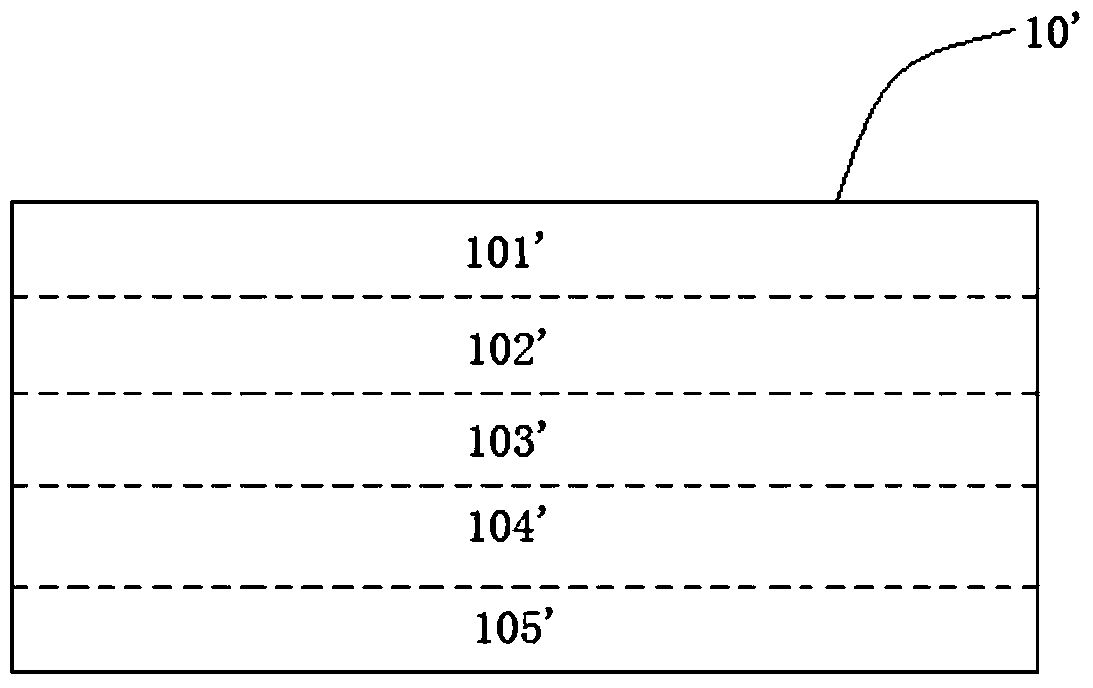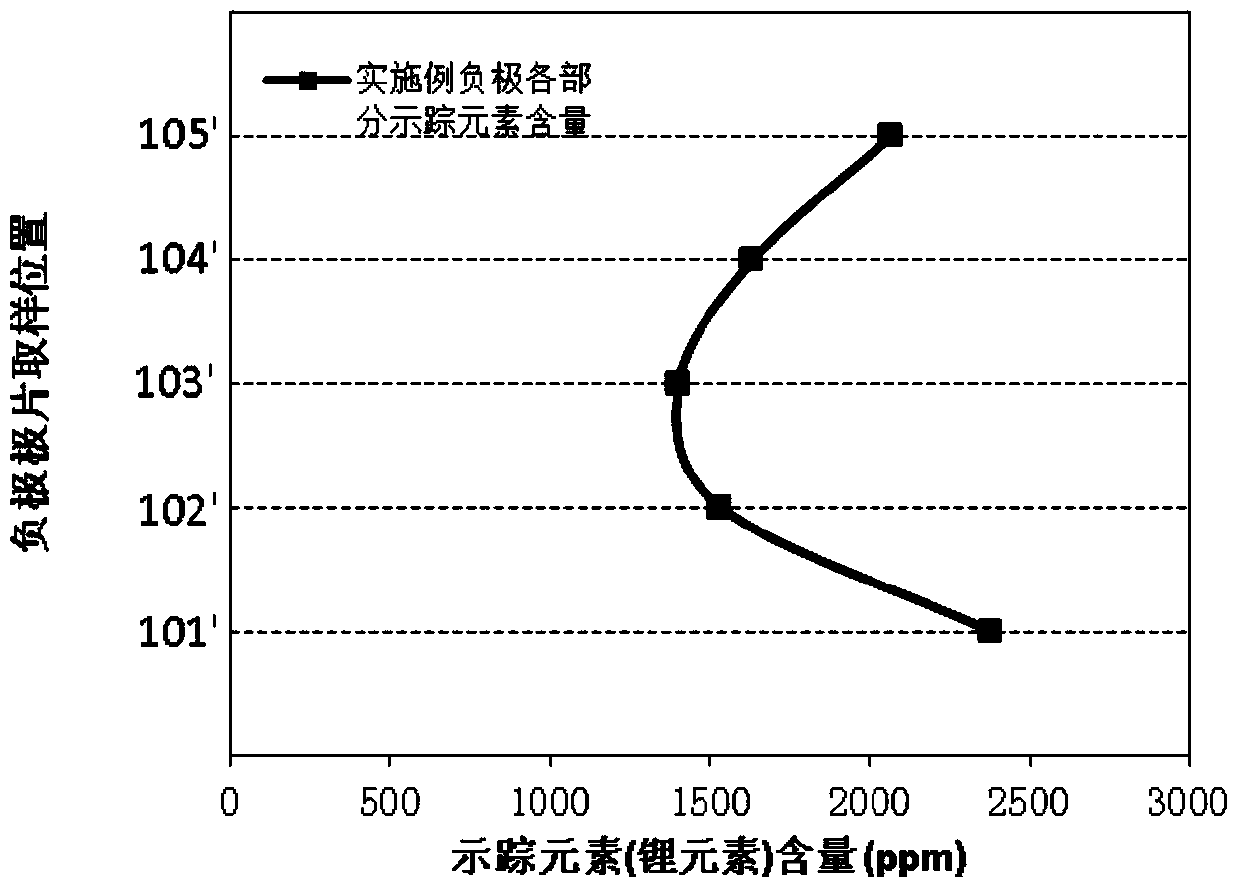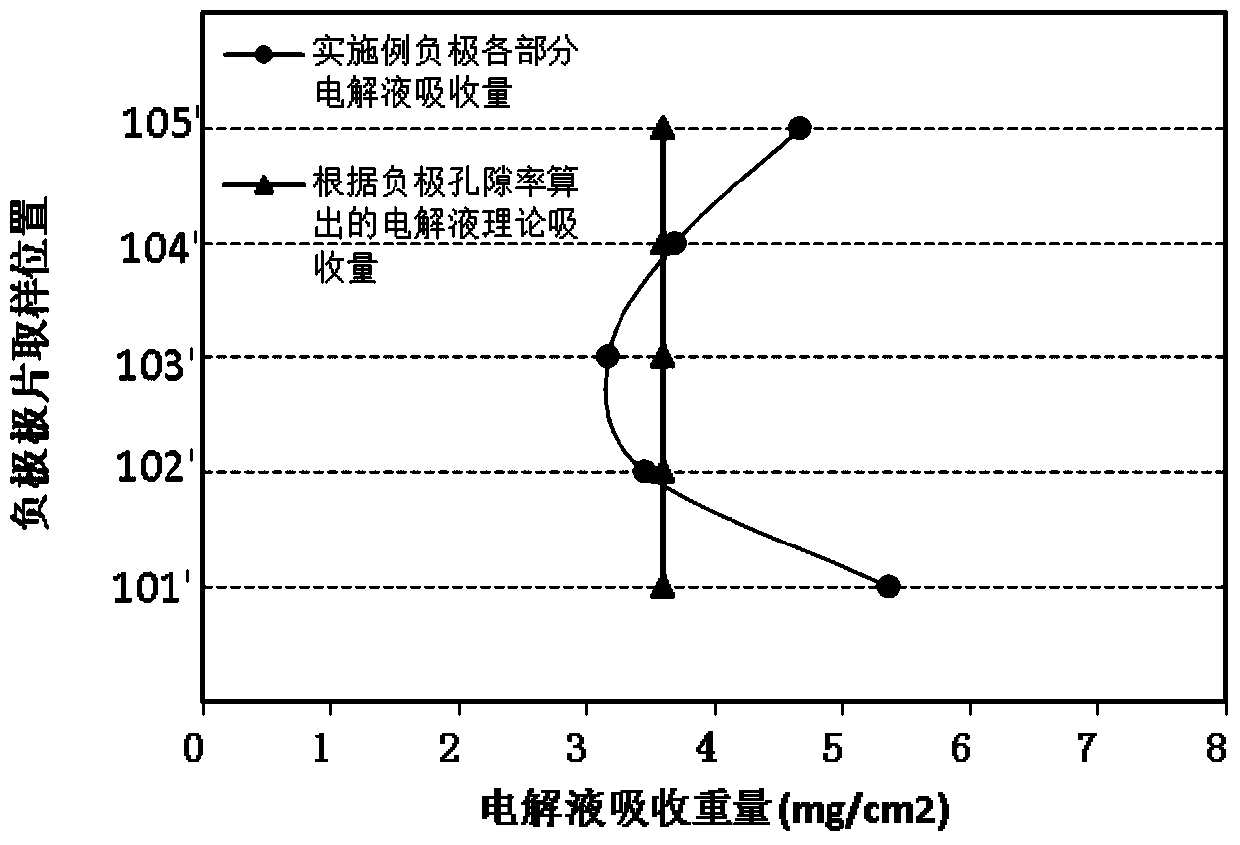A method for measuring the distribution of electrolyte in a lithium-ion battery core
A technique for lithium-ion batteries and measurement methods, which is applied in the field of measurement of electrolyte distribution in lithium-ion battery cores, and can solve problems such as lithium analysis in batteries, affecting battery safety and service life, etc.
- Summary
- Abstract
- Description
- Claims
- Application Information
AI Technical Summary
Problems solved by technology
Method used
Image
Examples
Embodiment 1
[0046] The measurement of electrolyte distribution on the negative pole sheet in embodiment 1 lithium-ion battery core
[0047] 1. Prepare two groups (experimental group and control group) of V0D5N0 non-injected electrolyte batteries (length 220mm, width 135mm, thickness 29mm, steel case), wherein the electronic insulating film uses polyethylene film with surface ceramic treatment ; The positive electrode active material is LiFePO 4 ; The active material of the negative electrode is graphite; the electrolyte formula containing tracer elements is a chain carbonate, and the lithium salt is 1M LiPF 6 .
[0048] 2. According to the normal battery processing procedure, inject 300g of electrolyte solution containing 1mol / L lithium hexafluorophosphate salt, and the trace element is lithium element in lithium hexafluorophosphate salt. Among them, the experimental group made the battery before charging according to the normal battery processing procedure, and the control group direct...
Embodiment 2
[0061] Determination of electrolyte distribution on the negative pole sheet in embodiment 2 lithium-ion battery core
[0062] 1. Prepare two groups (experimental group and control group) of V0D5N0 non-injected electrolyte batteries (220mm in length, 135mm in width, 29mm in thickness, aluminum shell), in which the electronic insulating film uses a polyethylene film with surface ceramic treatment ; The positive electrode active material is LiFePO 4 ; The active material of the negative pole piece is hard carbon; the electrolyte formula containing tracer elements is a chain carbonate, and the lithium salt is 1M LiPF 6 .
[0063] 2. Inject 300g of electrolyte solution containing 1mol / L lithium hexafluorophosphate salt according to the normal battery processing procedure, and the trace element is iron. Among them, the experimental group made the battery before charging according to the normal battery processing procedure, and the control group directly charged to the full state. ...
PUM
 Login to View More
Login to View More Abstract
Description
Claims
Application Information
 Login to View More
Login to View More - R&D
- Intellectual Property
- Life Sciences
- Materials
- Tech Scout
- Unparalleled Data Quality
- Higher Quality Content
- 60% Fewer Hallucinations
Browse by: Latest US Patents, China's latest patents, Technical Efficacy Thesaurus, Application Domain, Technology Topic, Popular Technical Reports.
© 2025 PatSnap. All rights reserved.Legal|Privacy policy|Modern Slavery Act Transparency Statement|Sitemap|About US| Contact US: help@patsnap.com



